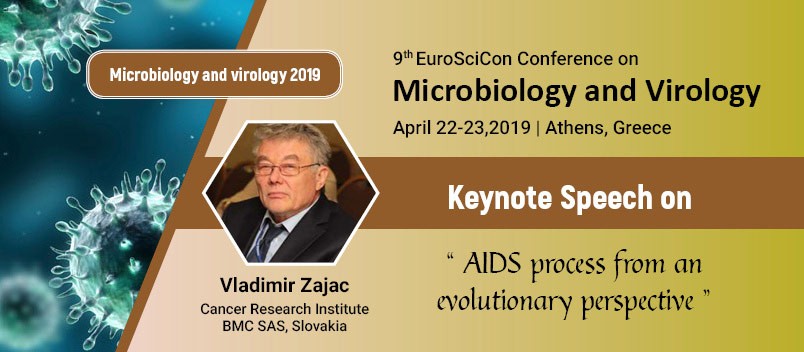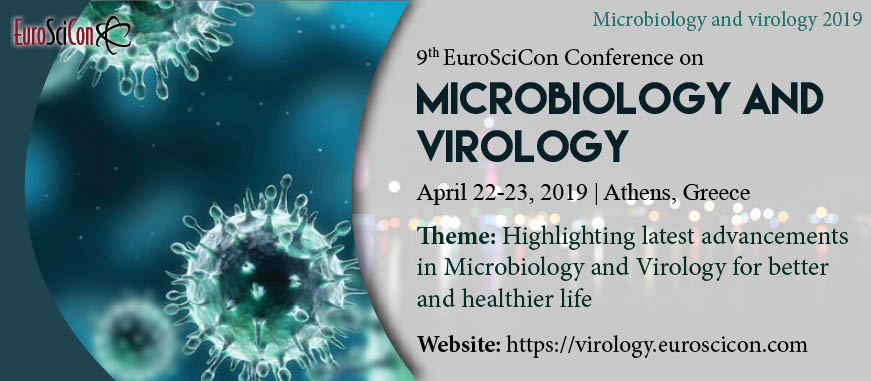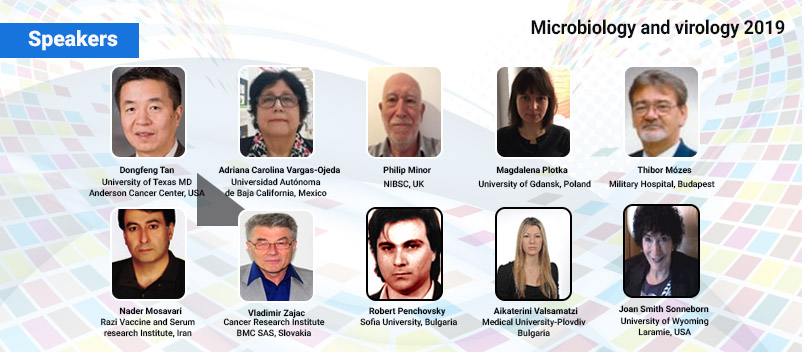MICROBIOLOGY AND VIROLOGY 2019
About us
Euroscicon is proud to host a conference on Microbiology and Virology (Microbiology and Virology-2019) taking place on April 22-23, 2019 in Athens, Greece. The conference is themed around “Highlighting latest advancements in Microbiology and Virology for better and healthier life”.
with the aim to bring together a wide audience of industry, healthcare, research, and medical practitioners to educate and bring about a fruitful debate on the confined topics.
The Microbiology Conference and Virology Conference 2019 will be a great event to network, learn and engage with professionals in the field of infectious diseases, virology and microbiology.
The Organizing Committee has done its best to set up a framework that we think will allow for a creative interplay of ideas. All we need now is to convert the extensive program on paper to an active and a vibrant forum in person through your active participation.
Who should attend?
- Microbiologist
- Microbiology and Virology Students
- Virologist
- Scientists
- Microbiology and Virology Researchers
- Microbiology and Virology Faculty
- Medical Colleges
- Microbiology and Virology Associations and Societies
- Research Labs
- Manufacturing Medical Devices Companies
Why to attend?
With members from around the world focused on learning about Microbiology and Virology and its advances; this is your best opportunity to reach the largest assemblage of participants from the Microbiology and Virology community. Conduct presentations, distribute information, meet with current and potential scientists, make a splash with new Microbiology and Virology developments, and receive name recognition at this 3-day event. World-renowned speakers, the most recent techniques, developments, and the newest updates in Microbiology and Virology are hallmarks of this conference.
Top Associations and Societies of Virology:
- Center for Emerging Viral Infections Research
- Hunter Medical Research Institute
- Center for Global Research and Intervention in Infectious Diseases
- Infectious and Immunologic Diseases Research Center
- Global virus network
- HIV Medicine Association
- International AIDS Society
- Canadian Society for International Health
http://addurl.nu
Past Conference Report
The 21st International Congress on Microbiology and Virology conference organized by EuroSciCon Ltd was held in Paris, France during June 21-22, 2018. Active involvement and generous comeback were received from the Organizing Committee Members, Editorial Board Members of EuroSciCon Ltd journals as well as from prominent Scientists, Researchers and Young Student community. Researchers and students who disclosed up from different parts of the globe have made the conference one of the most effective and prolific events in 2018. The conference was noticeable with the presence of renowned scientists, talented young researchers, students and business delegates motivating the two days event into the path of success with thought provoking keynote and plenary presentations highlighting the theme “Highlighting latest advancements in Microbiology and Virology for better and healthier life”.
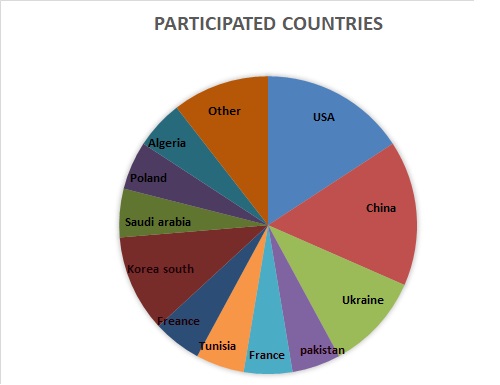
The meeting was carried out through various sessions, in which the discussions were held on the following major scientific tracks:
- Clinical Microbiology
- Virology
- Environmental microbiology
- Soil microbiology
- Immunology of viruses
- Application of microbiology and virology
- Food microbiology
- Plant virus
- Bacterial viruses
- Fungal viruses
- Viral vaccines
- Metabolic events may influence the pathogenesis of a virus infection
- Immunity or tissue damage to virus infections
The highlights of the meeting were the informative Keynote lectures from:
Barry T. Rouse, University of Tennessee, USA on Immunity or tissue damage to virus infections - What decides the outcome?
Marcel E. Curlin, Oregon Health and Sciences University, USA on Clinical testing of a novel and promising CMV- vectored HIV vaccine
Xin Cao, Northwest Minzu University, China on ATG13 restricts viral replication by induction of Type 1 Interferon
Tasnim Ayadi, University of Gabes, Tunisia on Wild bird exposure to flaviviruses in southern Tunisian Oases
Ibrar Khan, Abbottabad University of Science & Technology, Pakistan on Isolation and characterization of rhizobacteria from banana plant as growth promoting and biocontrol agent against soil borne pathogen
The Honourable Guests, Keynote Speakers, well-known researchers and delegates shared their innovative research and vast experience through their fabulous presentations at the podium of Microbiology and virology 2018 Conference. We are glad to inform that all accepted abstracts for the conference have been indexed in EuroSciCon Ltd Journal of Archives of Clinical Microbiology as a distinct issue.
We are also obliged to numerous delegates, company representatives and other renowned personalities who supported the conference by their active discussion forums. We are thankful to the Organizing Committee Members for their gracious presence, continuous support and assistance towards the fulfilment of Microbiology and Virology 2019. With the exceptional feedbacks from the conference, EuroSciCon Ltd would like to publicize the commencement of the 9th EuroSciCon Conference Virology during April 22-23 in Athens, Greece.
Let us meet again @ virology 2019 conference
z35W7z4v9z8w
Tracks/Sessions
1. Clinical and Molecular Microbiology:
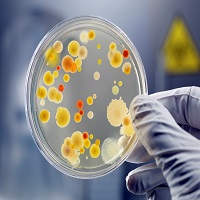
Clinical microbiology and molecular microbiology is the investigation of science which manages the investigation of the sub-molecular premise and any microorganisms which cause diseases. The reason for this investigation is on the human ailment, this concentration is contemplated by the premise of the case from the body site, kind of liquid or particular body tissue. The microbiologists must have the capacity to express the alteration between normal microorganisms expected in a specimen and those causing an infectious disease. The new microorganisms are being uncovered constantly and they are propelled increasingly opposing the anti-microbial. Thus, they are refined on a fake medium in the research center and along these lines, it is discovered whether it is microscopic organisms or parasites or infection amid the season of sickness.
2. Insect Virus and Fungal Virology

As of late the molecular investigation of replication, host interaction in insect viruses have contributed greatly to molecular, cell and organismal microbiology. The straightforwardness with which many insect viruses are spread in cell cultures and animals, the high yields virus particles or virus-encoded macromolecules, and the significance with which many insect viruses can be genetically operated for some experimental benefits provided by those pathogens. It deals with viruses that infect fungi are identified called Mycoviruses.T these Mycoviruses generally have double-stranded RNA genomes and isometric particles, but around 30% of these viruses have positive sense and single-stranded RNA genomes, so they are true Mycoviruses, that they must have a capability to be transmitted.
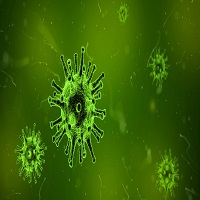
Viral oncology is a branch of oncology, in which it is worried about the treatment of human diseases/tumors and cancer with virus particles. Roughly 20% of all cancers worldwide results from chronic infections up to 15% of human diseases are described by a viral etiology with higher frequency in Developing Countries. Recently, the infectious nature of specific tumors has important implications in their prevention, diagnosis, and therapy. Now there are many significant kinds of research and experiments are going in viral oncogenesis for treatment of malignancy.

The knowledge of parasites that are multiplying inside bacteria by creating use of the host biosynthetic machinery is defined as bacterial virology. Bacteriophages are those which infect and replicate in bacteria. Since the last century, bacteria are constant to develop for the resistance to antibiotics such as penicillin, and this has directed to a renewed interest in the use of bacteriophages to treat serious infectious diseases.
5. Pediatric Infectious Diseases

Pediatrics is a subdivision of the science of medicine which includes the medical care of infants, children, and adults. Pediatric infectious diseases are that which is formed due to microorganisms and other microbes like bacteria, fungi, viruses, and other pathogens. These types of pathogens infect the children and make them ill causing several problems in the body. These infectious diseases may lead to the problems like Diarrhoea and vomiting in babies and infants. When the infections get savior problem, it interrupts the sleeping pattern of babies projecting them with the pain of difficulties. The most common Pediatric infectious diseases are Respiratory Syncytial Virus (RSV) and Sepsis and the contagious form of infections in babies.
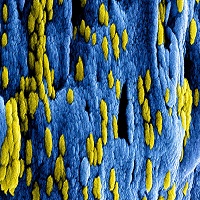
Viral epidemiology is about the study of the occurrence and spread of viruses in population over time. The features like host, virus and the specific environment of growth are monitored to determine the dynamics of viral infections, the ultimate target is to devise intervention policies. In the sense of epidemiology, the 'pathogenicity' is the extent of total infections that produce the evident disease, which is almost varying from virus to virus and may be affected by some host factors. This analysis prominence on the epidemiology of recently appeared virus and infectious diseases in humans and other animals. The diseases are acquired immunodeficiency syndrome (AIDS), bovine spongiform encephalopathy, canine hemorrhagic disease and respiratory syndrome in animals like horses.
7. Current Focus in Virology Research
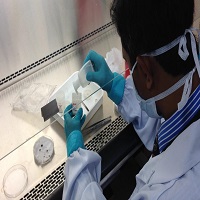
The current study in virology comprises the investigation of the mechanism of HIV replication and pathogenesis. Diseases like Alzheimer's disease and HIV-1-associated dementia. Some other research involves chronic and latent infections which are caused by viruses such as Epstein-Barr and Kaposi's sarcoma-associated herpesvirus and herpes simplex and the retrovirus. Scientists are also reviewing viral-host interactions along with the mechanism of viral induced cellular transformation. Drug-drug interactions happen when a drug interacts or interferes with another drug. The drug which can be included can be doctor prescribed solutions, over-the-counter meds, and even vitamins and normal items.
8. Microbiology
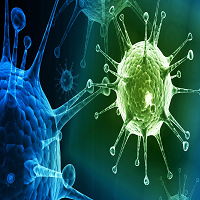
Microbiology is the learning of microscopic organisms, like bacteria, viruses, archaea, fungi, and protozoa. Some subdivisions of Microbiology are mycology, Virology, Immunology, infectious diseases, bacteriology, nematology, parasitology, etc. The antibiotics are the mediators used against pathogenic bacteria, either orally or paternally.
9. Microbial Physiology and Genomics

Microbial physiology is the progression of understanding the factors like cell assembly, growth factor, metabolism and the genomic arrangement of microorganisms. This is about the interconnection of the disciplines of microbiology, biochemistry, and inheritances of a bacterial cell. The genomics also plays a vital character where microbial physiology and genomics are inter-related. The experiment of microbial physiology and genomics are based on molecular biology concerned with the structure and function and evolution of a cell, the term genomics also defines the same, added it illustrates the mapping of genomes. To be more specific a genome is an organism’s complete set of DNAs which includes all genes.
10. Human Virology and Infectious Diseases

Most of the infectious diseases occur when organisms like bacteria, viruses, parasites or fungi get contact with our bodies and make us sick. These sicknesses can spread from person to person. A disease condition called Hepatitis, defined by the tenderness of the liver and characterized by the presence of inflammatory cells in the tissue of the organ. Hepatitis A is an intense irresistible infection of the liver instigated by the hepatitis A virus. HCV can spread mostly by blood-to-blood contact linked with the intravenous drug. The IHV focusses in the treatment of HIV/AIDS and other chronic viral diseases, such as Hepatitis C, Hepatitis B, and the Human Papilloma Virus Infection.
11. Health Care - Infectious Diseases
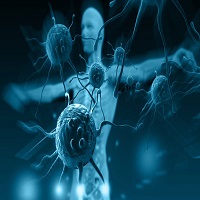
Some variations in lifestyle have also led to the growth of new threats to public health from infection. Health authorities depend on both medical consultants and research laboratory for data on the occurrence of these circumstances. The infectious disease professional of internal medicine is skilled in studying and doing experiments on infectious diseases. They also have knowledge in contaminations of the sinuses, heart, brain, lungs, urinary tract, bowel, bones, and pelvic organs by infectious diseases. Their wide physical experiments focus on all kinds of infections, including those instigated by bacteria, viruses, fungi, and parasites. Infectious disease specialists also have extra training in how the body fights against infection, how infections spread, and the way of control of infection.
12. Antimicrobials/Antibiotics/Antibacterial

Antimicrobials, antibiotics, antibacterial medications used in the treatment and prevention of the diseases caused by bacterial infections. Antibiotics are not active against viruses like the common cold or influenza and their unsuitable use permits the rise of resistant organisms. A group of drugs is used to treat infections caused by microorganisms/microbes/germs. The parasite is a kind of microbe that requires to live on or in alternative living being (host). Antibiotics can be taken in various ways like the mouth as liquids, tablets, capsules and they can be given by injection. An antimicrobial may be semisynthetic or synthetic which kills or control the development of microorganisms but causes slight or no injuries to the host. Wholly antibiotics are antimicrobials, nevertheless, antimicrobials are antibiotics.
13. Infection and Immune System

The immune system is classified into two types, innate immunity and adaptive, which is acquired immunity. Some differences are present between the two divisions, but some cell functions and components are common. All alive substances are subject to attack from disease-causing mediators. The process of defense gets more sophisticated as organisms become more complex. Almost all multicellular animals have devoted cells or tissues to deal with the infection. Jointly, these protections are known as the immune system. The main portions of the immune system are the natural barriers (skin, mucous membranes, etc.), nonspecific cells (phagocytes, natural killer cells, etc.), and nonspecific molecules (complement, interferons, etc.). There are many factors, such as age, general health, nutrition, and genetic makeup of any human host, affect how the immune system responds to microorganisms.
14. Diagnosis and Treatment of Infectious Diseases
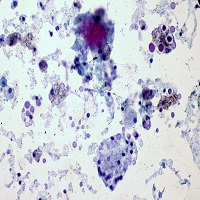
Diagnosis and treatment of infectious diseases are done by doctors along with the help of lab technicians and thereby regulates what kind of infections are occurred. They first diagnose the symptoms during the process of image scanning or by other tests. The laboratory test includes various kinds of infectious diseases which are similar to symptoms and signs. In a few cases, the body fluid or the sample collected for testing exposes the microbe which is invaded into the human body causing illness. The doctor diagnoses in an efficient way and proceeds with the treatments. During the diagnosis doctors follow various forms of diagnostic measures or methods such as Blood test, Urine test, Throat swabs, Stool sample, Spinal tap. Apart from these, they follow some image scanning techniques and Biopsies. After inventing the proper type of disease, the physician/doctor prescribes the equivalent dosage of drug/medications.
15. Microbial Vaccines and Advancements
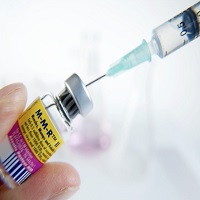
The vaccine is an incapacitated form of microorganism or virus which is introduced in the body to simulate a definite infection. As the vaccinated microbes are 'dead,' they do not cause a person to end up sick. Comparatively, vaccines stimulate an immune response by using the body a good means to fight off that sort of infection. It asylums infectious disease objectives and non-infectious ailment targets. The vaccine-mediated defense is a multifaceted mission. Recently the vaccines are developed empirically, with less or zero proficiency on how they set off the immune system. Their early defensive efficacy is usually consulted through the induction of antigen-particular antibodies.
16. Neurological and Blood Infectious Diseases
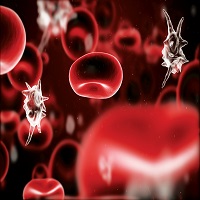
The diseases of the peripheral nervous system can cause severe neurological disorders when correlated to infections this may occur due to direct or indirect contact of the microbes or due to any secondary immune overactivation. HIV is a retrovirus, transmitted by sexual contact and contaminated blood. Herpes simplex virus type2 can cause neurological morbidity more than any other viruses. It is seen that about 45 million people are affected due to this type of virus in the USA. The cause of blood infectious diseases are the primary pathogens in human-like HIV, HBV, HCV contaminated blood or blood spills. Blood infections are very serious when they lead to organ damage, clotting of blood during sepsis reduces the flow of blood and in several cases, one or more organs fails. Sometime this may lead to worst conditions, like when blood pressure drops the heart gets weekend the patient is prone towards shock and within a fraction of second various organs in our body gets fails to function and thereby this leads to the death of the patient.
17. Virology and Viral Diseases:

Virology is about infections like submicroscopic, parasitic particles of hereditary material contained in a protein coat. There are some viral diseases like customary cold, influenza, rabies, measles, numerous sorts of detachment of the entrails, hepatitis, Dengue fever, yellow fever, polio, smallpox and acquired immunodeficiency syndrome (AIDS). There is another type of virus called Herpes simplex virus causes mouth rankles and genital herpes and is under investigation as a possible factor in Alzheimer's. The symptoms of infection may be seen in singular body parts, like skin rashes, hacking, or a runny nose. These symptoms can be prevented by wearing outfits and wearing face veils can help keep diseases from being passed starting with one individual then onto the next.
18.Viruses: Virus structure and expression:

Some large viruses are present like filamentous forms of viruses, influenza, and Ebola, they are basically too large to utilize caveolae or other commonly used entry routes. In its place, these viruses trigger internalization by activating micropinocytosis which is a specimen of viruses reprogramming cells to assist virus replication. The other important structural feature is the surface of the vision. There are some types of viruses called enveloped viruses are not stable outside of the human body and are typically transmitted by transfer of body fluids. Where nonenveloped viruses are much more stable, and most of them can be transmitted by other mechanisms like the fecal-oral route, this is also the way how polio and many other GI viruses are transmitted. In the case of Hepatitis, from contaminated shellfish, for example, is caused by hepatitis A, a nonenveloped virus that is stable outside of the human body. In contrast, hepatitis B and C viruses have envelopes and are transmitted by sexual contact or by blood.
19. HIV/AIDS AND other emerging viruses:

The human immunodeficiency virus(HIV) is a lent virus that causes HIV infection and AIDS.HIV diagnosis is done by testing human blood or saliva for antibodies to the virus. HIV, AIDS, clinical trials are research studies are performed to have a better approach, distinguish, or treat HIV, AIDS. Clinical trials are the predominant way to regulate if new medical approaches to HIV, AIDS are safe and effective in people.
20. Deadliest Viruses:

Humans beings have been contending viruses and viral infections, vaccines, and antiviral drugs have permitted us to keep infections from spreading widely and have assisted sick people to recover from some viral infections. But there are also some other viruses which are equally deadly and some of them even deadlier. We should be always being attentive on informs about theses deadliest viruses and viral diseases since those can spread quickly without our attention. Better prevent these viral diseases and infections we should aware about the viruses.
21. Host Defences

Naturally, when the immune system encounters a virus it produces specific antibodies that can bind to it and eliminate it. Antibodies present in the blood samples may be used to determine if the person has been suffering for the specific infection. The second way of defense is maybe by the cell-mediated and humoral immune response by the production of B cells and T helper cells. The immune system holds the retention of the infection hence a second encounter of the same virus is prevented and eliminated.
22. Respiratory Viral Infections
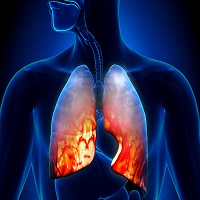
Recently one of the most common viral infections are the respiratory tract infections. Respiratory tract infections are including with the infection of sinuses, throat, airways or lungs. The respiratory tract infections(RTI) are generally classified in tow subdivisions as Upper Respiratory tract infections(URTI) and Lower Respiratory tract infections(LRTI). The viruses which are associated with respiratory disorders these are adenovirus, parainfluenza virus, respiratory syncytial virus, coronavirus, Coxsackie virus, human metapneumovirus.
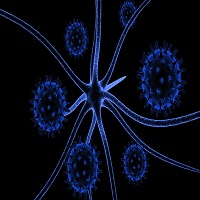
Neurovirology is the most important field that signifies the connection of clinical neuroscience, virology, immunology, and molecular biology. The main target of this field is to investigate the viruses which can infect the nervous system. Without this, there is an additional study of this division, the use of some viruses to trace neuroanatomical pathways, for gene therapy, and to eliminate detrimental populations of neural cells.
- Viral entry into the Nervous System
- Tools used for Diagnosing Neuroviral Infections
- Use of Viruses Gene therapy
- Future of the neurovirology Field
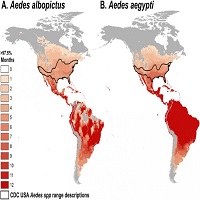
The spreading of viruses and viral infectious diseases across the globe is referred to as epidemiology. The epidemiologic studies of infectious diseases have concentrated on the factors which influence the acquisition and spread because this knowledge is essential for developing methods of prevention and control. Basically, epidemiologic studies and the application knowledge which gained from them have been essential to the control of the epidemic diseases, such as cholera, plague, smallpox, yellow fever, and typhus.
- Virus Surveillance
- Factors influencing the spread of Viruses
- Molecular Epidemiology
- West Nile Virus

Recently many researches and experiments are going on antiviral agents and their developed to act against the viruses and to prevent viral diseases. Naturally, most of the antivirals are used for specific viral infections, where a broad-spectrum antiviral is effective against a wide range of viruses. Some antibiotics, antiviral drugs do not destroy their target pathogen instead they inhibit their development. Sometime antiviral drugs may be toxic to human cells and viruses can also develop resistance to antiviral drugs. Some other antiviral drugs strengthen the immune response to the viral infection.
- Interferon Drugs
- Immune Globin
- Antiretroviral Therapy
- Limitations of Antivirals
Learn More
Recommended EuroSciCon conferences:
Euro Gastro 2019, March 11-12, 2019 Netherlands | Dental & Dental Hygiene, March 25-26, 2019 Hungary | Dermatology 2018, April 18-19, 2019 France | Infectious Diseases & Std-Aids 2019April 15-16, 2019 France | Quantum & Plasma physics , May 09-10, 2019 Sweden | Euro Optics , May 09-11, 2019 Sweden | Material Congress 2019, June 04-06, 2019 | Advanced Materials 2019, October 07-09, 2019 |
Top Microbiology and Virology Universities Worldwide:
The University of Pittsburgh, Vanderbilt University, University in New York City, The University of Texas, University of California, University School of Medicine, University of the Pacific, The University of Washington, Emory University, The University of Southern California, The Boston University, Case Western Reserve University, University in Chicago, Health Sciences University, Columbia University, University in Los Angeles, The University of Alabama, Saint Louis University, The University of Colorado, The Ohio State University, Nova South-eastern University, The University of North Carolina, Cornell University, Stanford University, University of Iowa, Texas Tech University System, University in Sacramento, The University of Nebraska , The University of Florida, University of Minnesota, Georgetown University, Brown University, The Rowan University, East Carolina University, Pennsylvania University.
University College London, University of Bristol, University of Silesia, Wroclaw Medical University, Bogomolets National Medical University, University of Zagreb, University of Cambridge, University of Sussex, University of Edinburgh, Kings College London, University of Brighton, Plymouth University, University of Exeter, Swansea University, University of Oxford, Swiss Federal Institute of Technology, University of Brighton, Ecole Polytechnique Federal de Lausanne
Asia Pacific and Middle East Universities:
University of New South Wales, Chinese University of Hong Kong, University of Science and Technology of China, National University of Singapore, Peking University, University of Melbourne, Tsinghua University, University of Auckland, Fudan University, University of Technology Sydney, Nanyang Technological University, University of Hong Kong, Tohoku University, Charles Darwin University, University of Wollongong, Australian National University, University of Queensland, Pohang University of Science and Technology, Seoul National University, National Chiao Tung University, University of Canterbury, Victoria University, Toyota Technological Institute, Hong Kong Polytechnic University, Zhejiang University, Korea University, University of Otago, National Taiwan University, Nanjing University, Osaka University, National Tsing Hua University, University of Tasmania, Deakin University, Nagoya University.
Microbiology and Virology Societies & Associations:
American society for microbiology, SIMB-Society for industrial Microbiology and biotechnology, SFAM-Society for Applied Microbiology-London, Society for industrial microbiology, IUMS International Union of microbiological societies, Southern California Branch of the American Society for Microbiology (SCASM)
European Society for Veterinary Virology, Dutch Society for Medical Microbiology, European Society of Clinical Microbiology and Infectious Diseases, Federation of European Microbiological Societies(FEMS), German Society for Virology, International Society for Antiviral Research, International Union of Microbiological Societies, Society for General Microbiology.
Asia Pacific Society for Marine Biotechnology; Committee of Asia Pacific Electron Microscopy Societies; Federation of Asia Pacific Microbiological Societies; International Society for Applied Phycology; International Union of Microbiological Societies; Microscopy Society (Singapore), Singapore National Academy of Sciences; Japanese Society of Microbial Ecology.
Microbiology and Virology Journals:
Acta Virologica, Acta Tropica, AIDS Book Review Journal, AIDS Patient Care and STDs, AIDS Research and Human Retroviruses, American Journal of Public Health, American Society for Microbiology News, Annals of Internal Medicine, Antimicrobial Agents and Chemotherapy, Antimicrobics and Infectious Diseases Newsletter, Apoptosis, Applied and Environmental Microbiology, Applied Biochemistry and Microbiology, Archives of Virology, BBA - Biochimica et Biophysica Acta, BBA - Molecular Basis of Disease - Online Version, British Medical Journal – BMJ, Canadian Journal of Microbiology, Cell, Clinical Care Options for HIV, Clinical Microbiology Newsletter, Clinical Microbiology Reviews, Current Biology, Current Microbiology, Diagnostic Microbiology and Infectious Disease, Enzyme and Microbial Technology, FEMS Immunology and Medical Microbiology, FEMS Microbiology, International Journal of Antimicrobial Agents, International Journal of HIV & AIDS, Journal of AIDS/HIV, Journal of Antimicrobial Chemotherapy, Journal of Bacteriology, Journal of Clinical Virology, Journal of General Virology, Journal of Medical Virology, The Lancet, Microbiology, Nature, New England Journal of Medicine.





